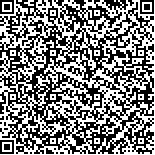下载中心
优秀审稿专家
优秀论文
相关链接
摘要

云覆盖作为天气和气候变化的一个重要因子,对地表-大气能量平衡和水循环有着重要的影响,因此,快速、准确地利用卫星遥感技术检测云覆盖具有重要的实用价值和科学意义。利用卫星遥感数据,尤其是常用的Moderate Resolution Imaging Spectroradiometer(MODIS)影像数据,因其具有较高的光谱和时间分辨率,以及2330 km扫描幅宽,为大范围实时、准确地进行云检测提供了可能。目前,基于MODIS数据发展了大量的云检测方法,但因地表类型的多样性和大气状况(如空气污染和沙尘事件等)的复杂性,目前已有的云检测方法,检测精度通常具有较大的不确定性,且针对不同地表和大气状况缺乏普适性,同时也缺乏对检测精度的定量化评估。因此,本文首先比较了常用的3种云检测算法,并基于前人经验提出了两种改进方法(方法4和方法5),首先区分出云和冰雹,摒弃了不稳定的亮温波段,两种算法均适用于复杂地表和大气状况的云检测算法。结果显示,方法5可以较好地应用于基于MODIS数据的云检测,总体精度达92.6±7%,改进了现有基于MODIS数据的云检测算法;方法4平均总体精度82.9±13%,虽然精度相对较低,但云残留少,适合作为对云敏感度高的研究工作的云检测方法。
Clouds cover approximately 70% of the Earth's surface. They can balance energy and water cycles, so they are considered one of the most important parameters in the Earth's surface system. Remote sensing provides a rapid yet efficient cloud detection approach, especially through moderate-resolution imaging spectro radiometer (MODIS) imagery that has been scanning the Earth's surface at a large scale, with a reasonable 0.25 km to 1km spatial resolution, more than once a day since 1999.The use of remote sensing for cloud detection has long been considered a simple issue because of the significant difference among cloud spectrums and other surfaces or atmospheric conditions. However, its instability is due to the complexity of cloud types, seasonal surface changes, and varied atmospheric conditions. Thus, this research aims (1) to compare typical cloud detection methods, and (2) propose and validate improved methods based on the previous ones.
We selected an area in East China with complex surface and atmospheric conditions (e.g., aerosol pollution, Asian dust, and snow cover) as the study area, and obtained nine MODIS L1B products on typical seasons in the study areas for a cloud detection experiment. Typical spectral signatures of cloud, high reflectance in visible bands, and low-bright temperatures in infrared bands are commonly used for cloud detection; however, their results remain uncertain because of varied surfaces and atmospheric conditions. Thus, we compared three commonly used cloud detection methods, abandoned unstable infrared bands, and considered snow detection, from which we proposed two improved methods.
The proposed methods improved the previous ones as results showed high and stable overall accuracy. One of our proposed methods obtained the best overall accuracy of 92.6±7%, and the average mapping accuracy of cloud area and no-cloud area was at 95.8% and 88.2%, respectively; the other method had a low overall accuracy of 82.9±13%, which was similar to the rest of the methods, but could detect almost all cloudy pixels.
The proposed methods also widened the applicability of MODIS imagery under complex Earth surface and atmospheric conditions as results found that snow, air pollution, and Asian dust could be better distinguished from clouds by using the two methods based on MODIS data, except under some extremely heavy dust conditions.
The two proposed cloud detection methods have different applicability in research. One obtained high and stable detection accuracy (92.6±7%); while the other achieved a relative low-detection accuracy, but detects most cloud cover information, which is suitable to remote sensing research with high sensitivity to cloud errors. Our proposed methods improved cloud detecting ability under complex ground and atmospheric conditions.

